|
Grassy stunt virus
| Symptoms |
|
| |
|
- Diseased hills are severely stunted with excessive tillering and a very upright growth habit
- Diseased hills has a grassy and rosette appearance
- Leaves short, narrow, and yellowish green with numerous small rusty spots or patches, which form blotches
- Retention of green coloration of the leaves after application of sufficient nitrogenous fertilizers
- Infected plants usually survive until maturity, but produce no panicles
- The symptom develops 10-20 days after infection.
|
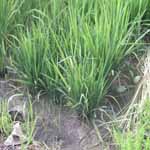 |
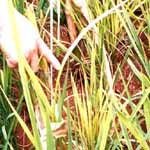 |
| Grassy stunt virus |
Rice grassy stunt virus
disease |
|
| Top |
| |
Identification of pathogen |
|
|
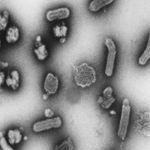 |
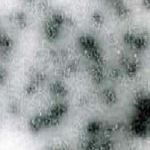 |
The virus exists in the vector and in the rice crop. Brown planthopper nymphs and adults transmit it where rice is grown year-round. RGSV is generally endemic. The macropterous forms or the long winged adults of the insect are important in spreading the disease than the short winged forms. They feed on the diseased plant for at least 30 minutes to pick-up the virus. Higher infection is attained after prolonged inoculation feeding periods of up to 24 hours.
The availability of the vector encourages the damage. Rice grassy stunt virus (RGSV) is a member of the Tenuiviruses. It has fine filamentous particles, which are 6-8 nm in diameter. It has a nodal contour length of 950-1,350 nm. The particles have one capsid protein and the genome is made up of four single-stranded RNA. |
| Grassy Stunt Virus |
Rice Grassy Stunt Virus |
| |
|
|
| Top |
| Management Strategies |
|
|
|
- Avoid close planting and provide 30 cm rogue spacing at every 2.5 to 3.0 m to reduce the pest incidence.
- There are varieties released by IRRI, which contain genes for BPH resistance, like IR26, IR64, IR36, IR56, and IR72.
- plouging and harrowing the field to destroy stubbles right after harvest in order to eradicate other hosts.
Apply any one of the following to control vector BPH
- Phosphamidon 40 SL 1000 ml/ha (or) Phosalone 35 EC 1500 ml/ha (or) Carbaryl 10 D 25 kg/ha (or) (or) Acephate 75 SP 625 gm/ha (or) Chlorpyriphos 20 EC 1250 ml/ha.
|
|
|
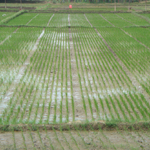 |
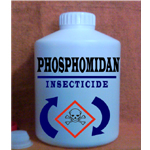 |
Provide rogue spacing of
30 cm to check vector
movement |
Spray Phosphomidan to
control vector Brown Plant Hopper |
| Top |
|
|